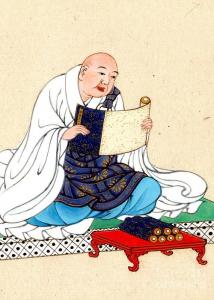(A fragment from a larger work in progress)
Somewhere along the way in our Western Zen communities, people got it in their heads that you weren’t supposed to read. Okay, there are reasons. Words are traps. Easy to make them into little shrines, offer some incense, and be on your way. But, within the vast literature there are many important pointers.
And. Reading a little of the canonical literature of Buddhism and in particular Zen, can be enormously helpful. Canonical because it’s been curated, this is the collective wisdom. And there are mountains of first-rate commentarial literature. Ask a friend. Get some reading lists. Go for it.
You want a place to start? Begin with the Platform Sutra. It tells the story and is available in scholarly and more popular editions. In his Lectures on the Ten Oxherding Pictures, Yamada Mumon mentions the “four texts of the Zen school.” One is the Ten Oxherding Pictures. In addition to Mumon Roshi’s version and commentaries, there are numerous translations online and in print. As is true of the other three texts, “Faith in Mind,” the “Song of Enlightenment,” and the “Principles of Zazen,” sometimes rendered “Universal Recommendation for ZAazen.” I would add the Heart Sutra and encourage a deep reading of the many commentaries. For more, there are numerous good reading lists available online.
Although, I’ll add this. If you want to take on a big reading project, I think there’s some good guidance to be found among our Chinese ancestors. When the flood of Buddhist sutras, all purporting to be the words of the Buddha appeared over a fairly short period of time in the early Middle Ages, the Chinese readers were confused. How could all these different books be about the same thing? Many flat out contradicted each other. And the quality and styles of presentation were all over several maps.
Finally, they concocted a story. The sutras were all true. And they didn’t actually contradict each other. Rather what happened was that after the Buddha had his great awakening, he preached the Avatamsaka Sutra, the Flower Ornament Scripture. And no one understood. So, he started over. And here we get a rough ordering of first the Pali texts associated with the Theravada tradition, and then the Sanskrit Mahayana texts. And, finally, as the completion of the whole thing, the Sadharmapundarika Sutra, the Lotus Sutra.
So, the Flower Ornament and the Lotus might be taken as the most important. But the Flower Ornament is vast. The principal translation is published as three very big books. And, the Lotus, well, the lotus is a confusing mess. It circles and circles and never quite gets anywhere. The renowned Hakuin Ekaku wrote how when he first read the Lotus, he dismissed it as trash. Much later, it opened critical doors for him. And after that he never stopped praising it.
Either of these would be big projects. And, perhaps not for right at the beginning.
But don’t settle just for Buddhist texts. Read the mystical literature of other world religions. And more than that. Look at art. Really look at art. There’s an icon of the Holy Trinity painted in 1425 by a Russian artist, Adrei Rublev. In my view it points directly to the great mystery. Listen to music. Seriously listen. There are those who say Beethoven’s 9th symphony justified the whole of human existence. They might be right. Take walks. Lots of walks. Learn how to saunter. Volunteer in a Catholic Worker soup kitchen. Attend a High Anglican Mass. Attend a Quaker silent meeting. Look at people’s hands. Watch children playing. Smell the morning air.
And. Learn how to sit. Learn to just sit. That “Universal Recommendation for Zazen” is a great text for this.
All the while try not to interpret what you’re experiencing too quickly. Be curious. Let it all rest in your heart. As others say, stay hungry.
Be a student.













